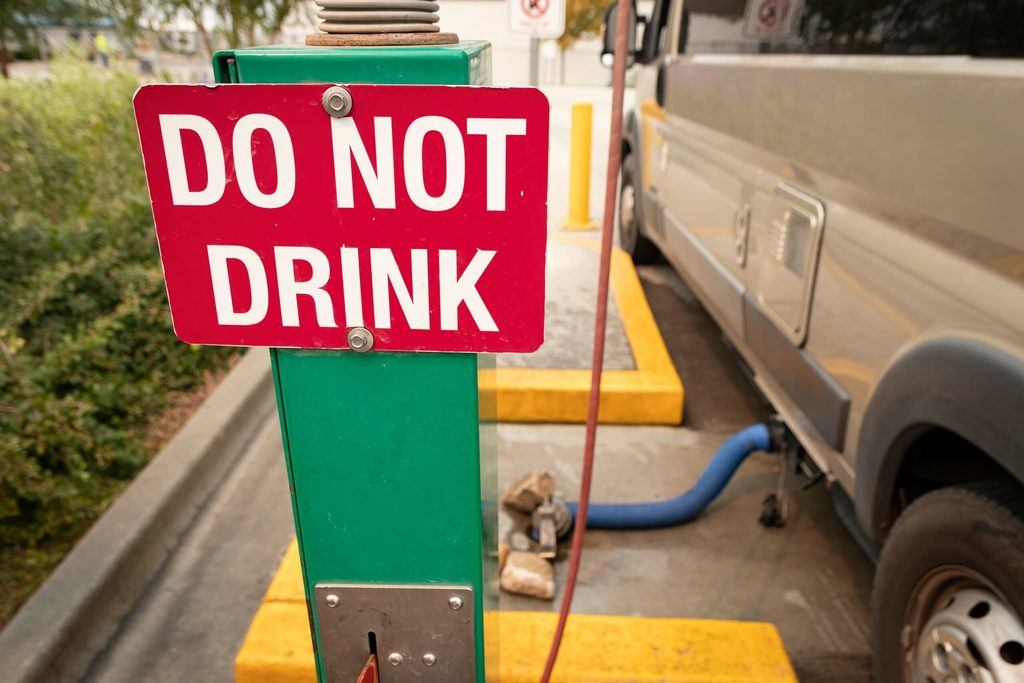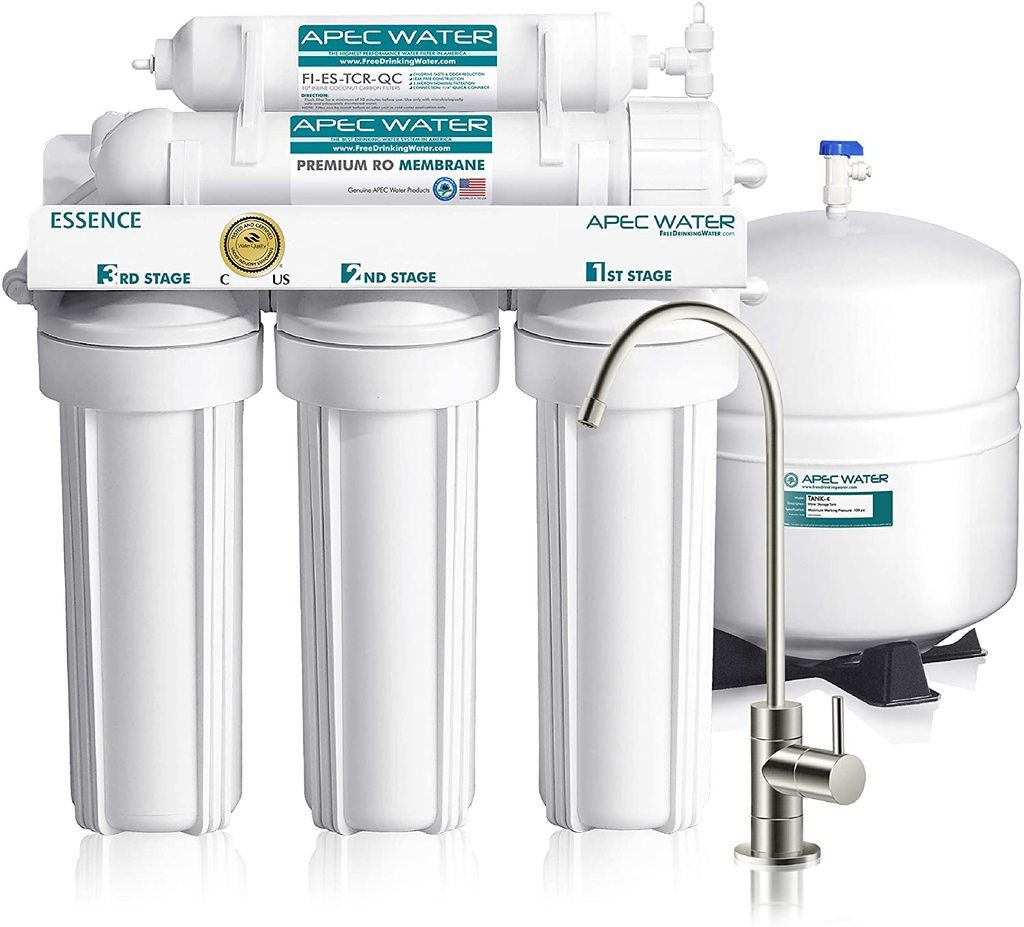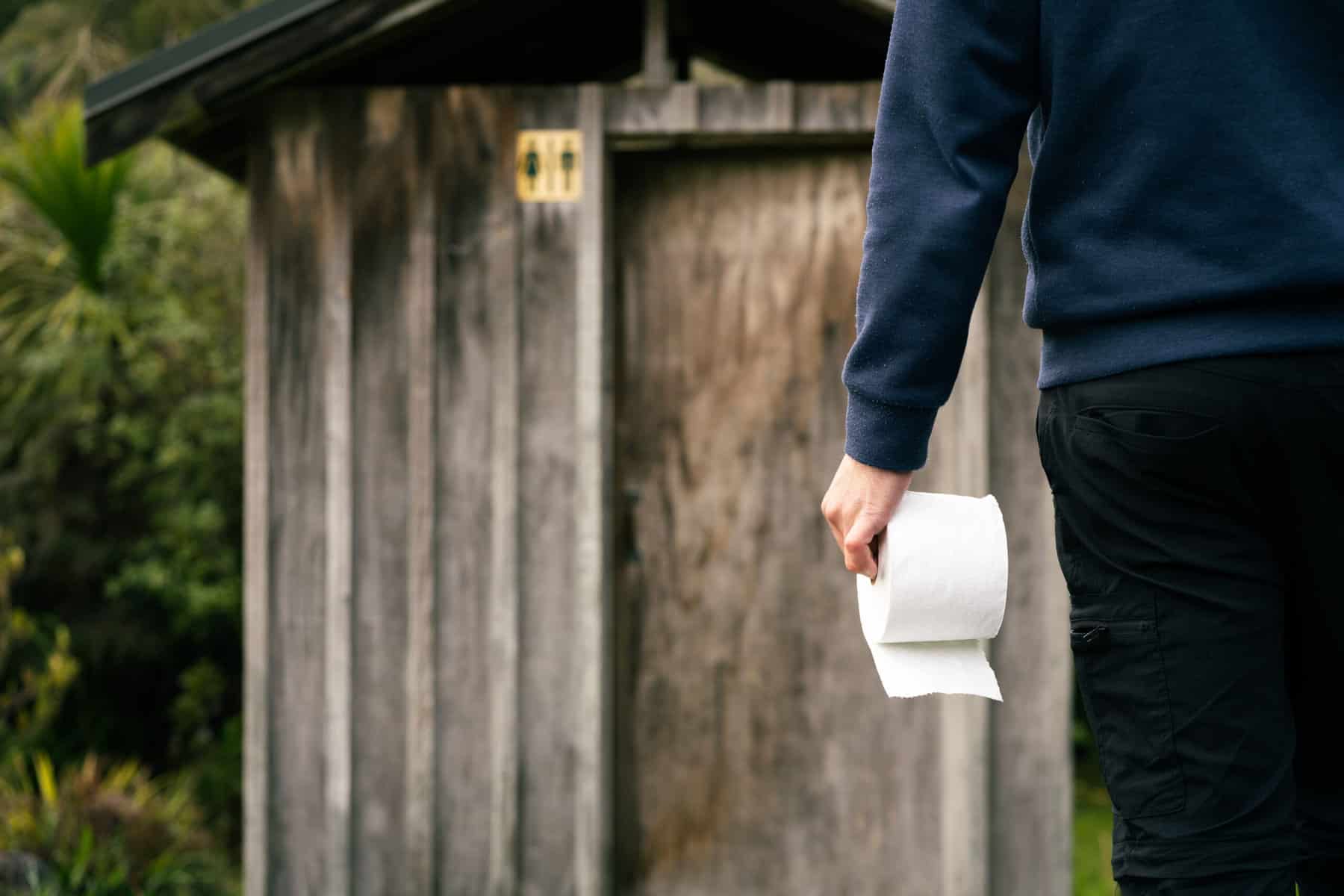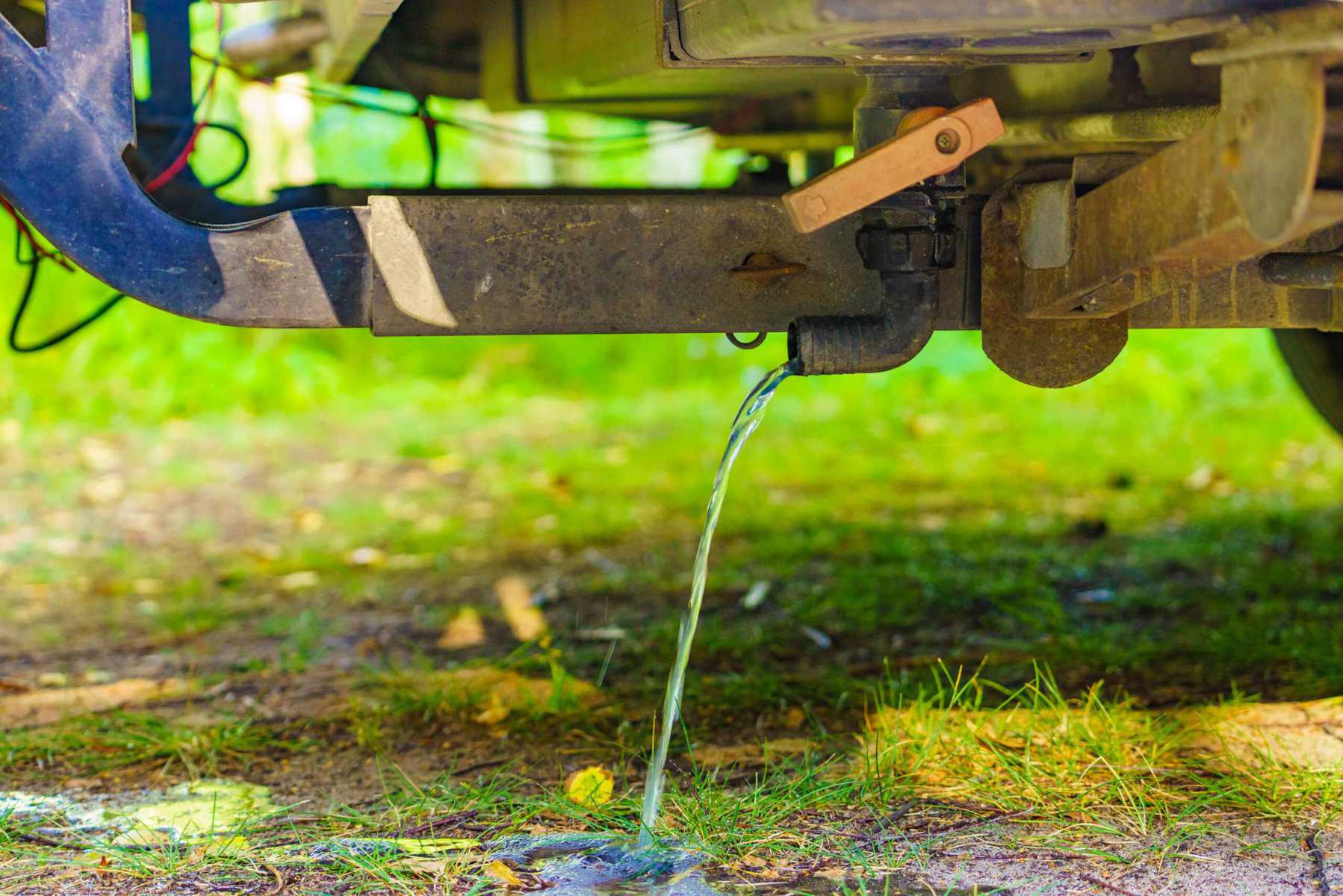Like many RVers, I spent hours trying to find the best RV water filter for my rig. I found one, and I stopped worrying about bad water in our plumbing. But later I learned that not even an awesome water filter can stop parasites from hitching a ride at the dump station. Between dump hoses and water fill spigots, RV dumps are the perfect setting for waterborne bugs to hitch a ride if you’re not careful. Ask me how I know. Today, I always follow these RV sanitation tips as an extra precaution.
Real Life Lessons at the RV Dump Station

In North America, we accept that if water comes out of a faucet, it must be safe. Even when the fresh water supply is within feet of an RV dump station, RVers like us use it anyways. We take it for granted that water supplies at campgrounds, highway rest areas, and resorts are safety tested by health officials. Some RVers are even brave enough to use the on-site hose to fill their fresh water tank. Many don’t question where the hose ends have been or what they have touched.
But nowhere else in daily life do we come into such close contact with other people’s raw sewage. Careless RVers at dump stations can spread bacteria onto the ground. Germs splatter onto the sewer cap, and march up the fresh water spigot. Even if you wear disposable gloves, all it takes is wiping your eye or your nose with a germy gloved hand and your intestines pay the price.
The one time I was careless when dumping, I paid the price. An RVer before me spilled waste on and around the dump station pedestal. I did my best to clean the mess, but my intestines paid the price a day later. It was a gross, real life RV lesson that I never forgot. Now I always follow these RV dump station safety tips, and travel with the best RV water filter I can afford..
How to Stay Safe at the RV Dump Station

Wear disposable gloves. Always.
Don’t touch anything at the dump station until you wipe it down with disinfectant wipes while wearing disposable gloves.
Wash your hands with soap and water after dumping and before handling facilities, hoses, and sewer caps.
Do not fill your freshwater tank from dump station rinse water, unless you are sure it is a safe water supply and you can use your own water hose.
Always use your own water hose to fill your tank. You don’t know how previous RVers have handled the supplied hose.
Keep the ends of your RV water hose off the ground at all times. Be especially careful when attaching your hose to a tap.
Fill your freshwater tank from a trusted water supply. Municipal and campground sources are a safe bet in the U.S. and Canada.
Once your tank is filled, fling all remaining water out of the hose. Attach the ends of the RV water hose to each other. Store the coiled hose in a closed plastic bag or bin.
Freshwater Holding Tanks And Drinking Water Safety Tips
Sanitize your freshwater tank every six months. The most common method is to pour one-quarter cup of bleach for every 15 gallons of water in your tank. Let stand overnight. Drain, fill, and rinse at least twice the next day. You may need to do it more, until chlorine odor dissipates.
Choose the best RV water filter you can afford. Even if you practiced RV dump station safety, the the water coming out of your RV faucets may be contaminated with trace amounts of metals and bacteria. The best RV water filter can also remove grit from some desert water supplies. You’ll say goodbye to bad tasting water too.
Choose an under-sink or reverse-osmosis RV water filter model. These generally outperform faucet mounts, carafes, and inline fresh water hose units. In a pinch, use a countertop water filter pitcher like the Brita model.

Use filtered water to cook, wash veggies, brush teeth, make beverages and ice cubes. Your dog also appreciates filtered water.
Wash your hands thoroughly with soap and water. Do it especially before handling food, food preparation equipment, utensils, serving dishes and tableware. Even when you dry camping, saving water doesn’t mean skimping on hygiene habits.
Think your RV freshwater tanks have tainted water? Dump it quickly, then sanitize the tank with the bleach-and-water flush described above.
Finally, don’t get lazy about RV water hygiene, even if you don’t drink from your RV freshwater tank. Many RVers skip buying the best RV water filter and opt for bottled water instead. But waterborne bacteria still can hitch a ride onto ice cubes. It can splash onto washed vegetables, or hop onto your toothbrush. Eeew! If they make it into your GI system, you’ll wish you had practiced better freshwater safety.
RVing is always an adventure, even when it comes to dump station stops and drinking water safety. Follow these simple hygiene habits, get the best RV water filter you can afford and pull out all the stops to keep waterborne illness from ruining your trip.



